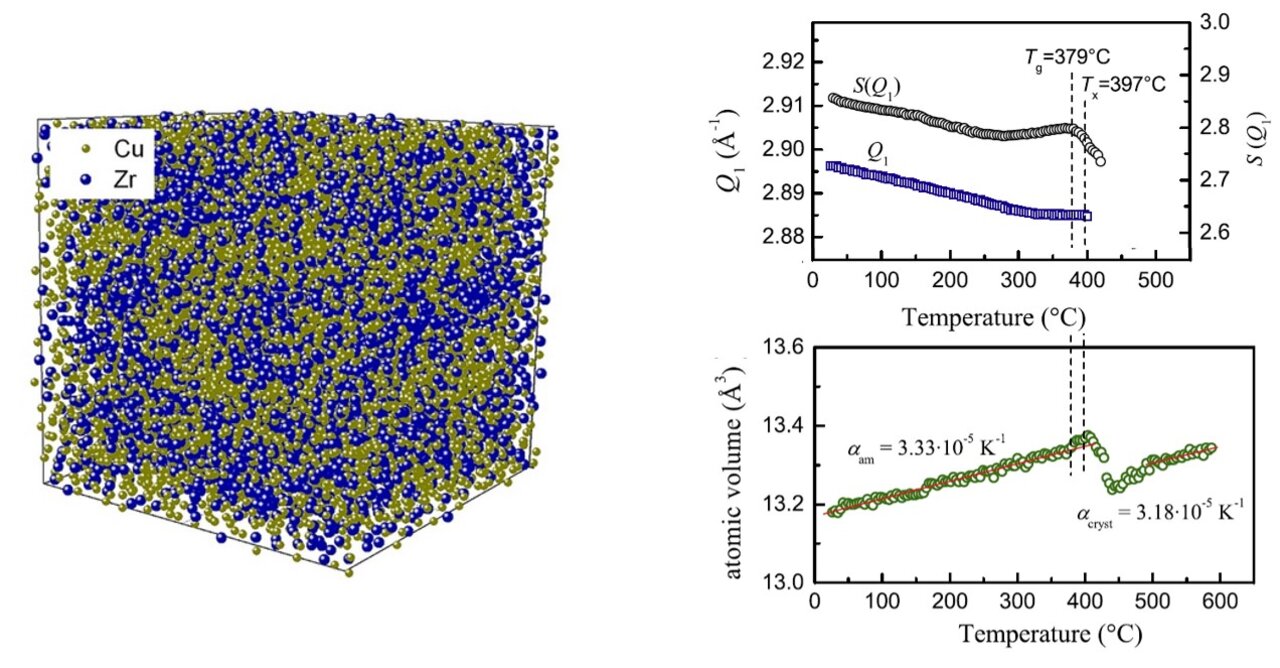

Atomic structure of metallic alloys in liquid and amorphous state determines to a large extent their properties as well as the glass formation itself. Unlike crystalline substances with periodic long-range atomic order, amorphous and liquid alloys are characterized by short- to medium-range atomic order.
We investigate the atomic order in metallic glasses and liquids using complementary experimental techniques such as high-energy synchrotron X-ray diffraction (XRD), neutron diffraction (ND), and extended X-ray absorption fine structure (EXAFS) spectroscopy. Three-dimensional structural models are built using Monte-Carlo simulation technique by simultaneous fitting the experimental data.
Structural data are analysed in relationship to the physical properties such as dynamic viscosity, atomic density or volume, electrical resistivity etc.
H. Weber, M Schumacher, P. Jovari, Y. Tsuchiya, W. Skrotzki, R. Mazzarello, I. Kaban, Experimental and ab initio molecular dynamics study of the structure and physical properties of liquid GeTe, Physical Review B 96 (2017) 054204; URL https://doi.org/10.1103/PhysRevB.96.054204
I. Kaban, P. Jovari, B. Escher, D.T. Tran, G. Svensson, M.A. Webb, T.Z. Regier, V. Kokotin, B. Beuneu, T. Gemming, J. Eckert, Atomic structure and formation of CuZrAl bulk metallic glasses and composites, Acta Materialia 100 (2015) 369-376; URL: http://dx.doi.org/10.1016/j.actamat.2015.08.060
I. Kaban, P. Jovari, A. Waske, M. Stoica, J. Bednarcik, B. Beuneu, N. Mattern, J. Eckert, Atomic structure and magnetic properties of Fe-Nb-B metallic glasses, Journal of Alloys and Compounds 586 (2014) S189-S193; http://dx.doi.org/10.1016/j.jallcom.2012.09.008